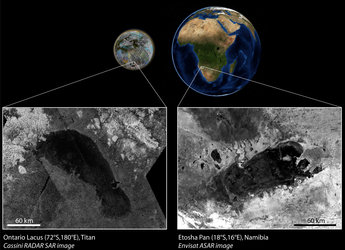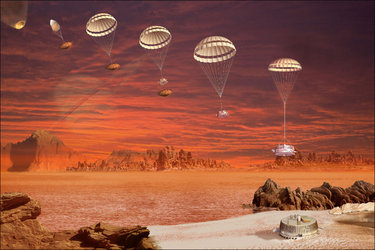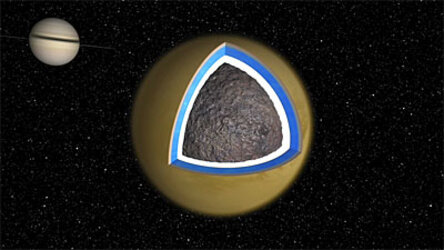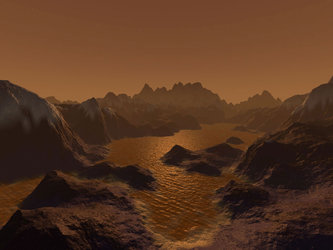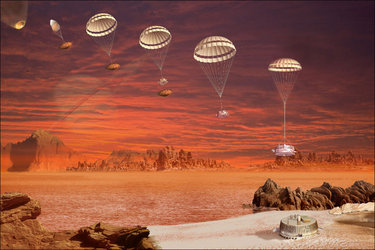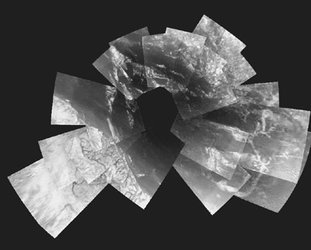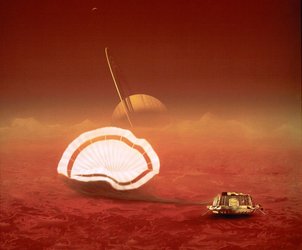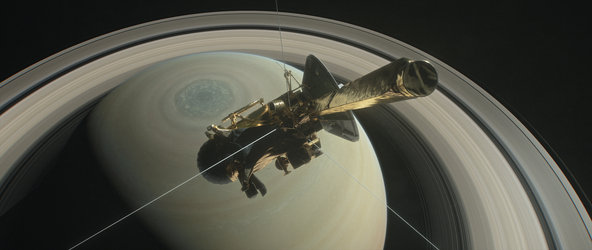Notes for editors
“Bouncing on Titan: Motion of the Huygens Probe in the Seconds After Landing,” by S. Schröder, E. Karkoschka and R. Lorenz is published in Planetary and Space Science, DOI 10.1016/j.pss.2012.08.007.
The Cassini–Huygens mission is a cooperative project of NASA, the European Space Agency and the Italian Space Agency. The Jet Propulsion Laboratory, a division of the California Institute of Technology in Pasadena, manages the mission for NASA’s Science Mission Directorate, Washington, DC.
Animation details:
The touchdown of ESA’s Huygens probe on Titan in January 2005 is relived in this animation. The sequence is shown in two speeds. The initial impact of the probe with the surface creates a small, 12 cm deep hole and throws up dust into the atmosphere. The probe then bounces out and slides 30-40cm before wobbling to a rest. Vibrations in the probe’s instruments were recorded for nearly 10 seconds after impact.
The motion was reconstructed by combining accelerometer data from the Huygens Atmospheric Structure Instrument and the Surface Science Package with photometry data from the Descent Imager/Spectral Radiometer.
Credits: ESA–C. Carreau
For further information, please contact:
Markus Bauer
ESA Science and Robotic Exploration Communication Officer
Tel: +31 71 565 6799
Mob: +31 61 594 3 954
Email: markus.bauer@esa.int
Stefan E. Schröder
Max Planck Institute for Solar System Research
Email: schroder@mps.mpg.de
Nicolas Altobelli
ESA Cassini–Huygens Project Scientist
Tel: +34 91 813 1201
Email: nicolas.altobelli@sciops.esa.int








